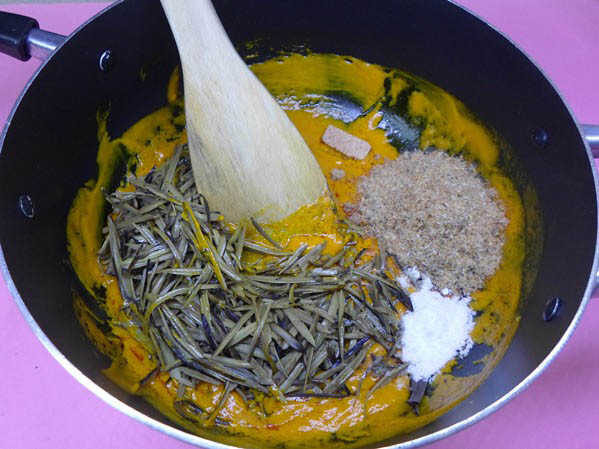AFRICAN SALAD (ABACHA)
Africa is blessed with mouth watering dishes that are wonderful in itself. Abacha is a sumptuous delicacy of the south-eastern people of nigeria. The green vegetables, ugba and other ingedients make abacha a meal rcommended for healthy living. It is often prepared with dried shredded cassava which is usully soaked in water to make it soft. It can be enjoyed as a snack or a full meal anytime, any day. At any igbo traditional gathering, abacha is a must. I personally enjoy it with a chilled glass of palm wine. YUMMY!! Allow me show you how it is made.
 INGREDIENTS
INGREDIENTS


- 600g of abacha (shredded cassava)
- 2cups ugba
- 1cup of palm oil
- 2tablespoon of powdered potash
- fish (any of your choice), spiced and cooked
- 1 big onion, chopped
- salt and dry pepper
- 4tablespoon ground crayfish
- 2 seasoning cubes
- 1teaspoon ground ehu seeds
- hot or boiling water
- 1 teaspoon iru
- utazi leaves
- kanda, cooked and sliced
- 6 garden eggs, chopped
- garden egg leaves, optional
- 1 medium onion, sliced for garnishing

METHOD
- Soak the abacha for 10mins until it softens
- Drain out the water, pour hot water over it and drain.
- Rinse the ugba in warm water and place aside
- Dissolve the potash in water and sieve out the water. Stir the potash water with the palm oil until it forms a yellowish paste.
- Place on heat and add the ground ehu, pepper, stock cubes, crayfish, chopped onion and ugba. Stir and turn off the heat.
- Add the iru and mix properly, add the fish and kanda.
- Add the abacha and chopped garden egg, stir properly.
- Add sliced utazi and salt to taste.
- Garnish with sliced garden egg leaves and onion. Feel free to play with this part, you can garnish it to your taste.
Abacha can be eaten warm or cold depending on your preference. Serve with a cold glass of palmwine or any drink of your choice. Thank me later.
ENJOY YOUR MEAL!



